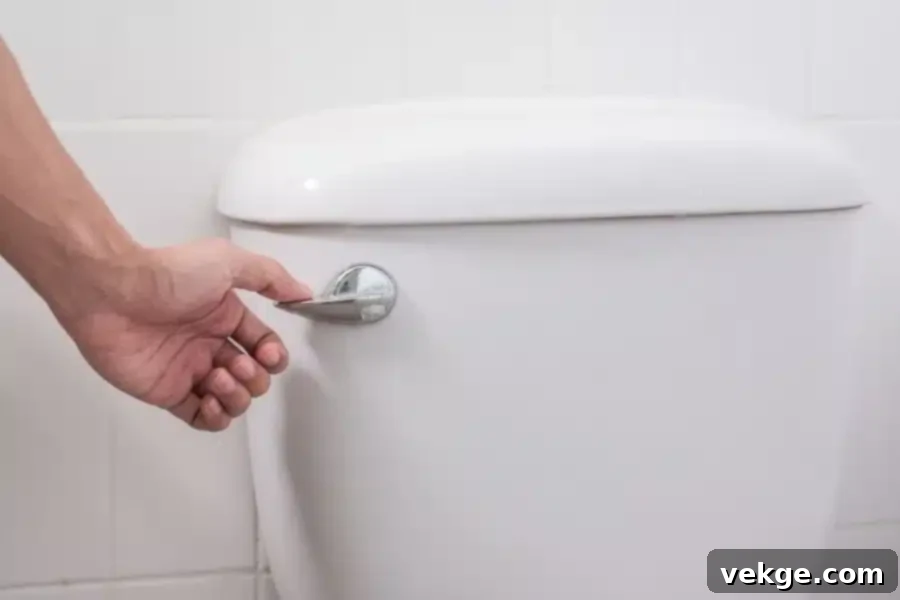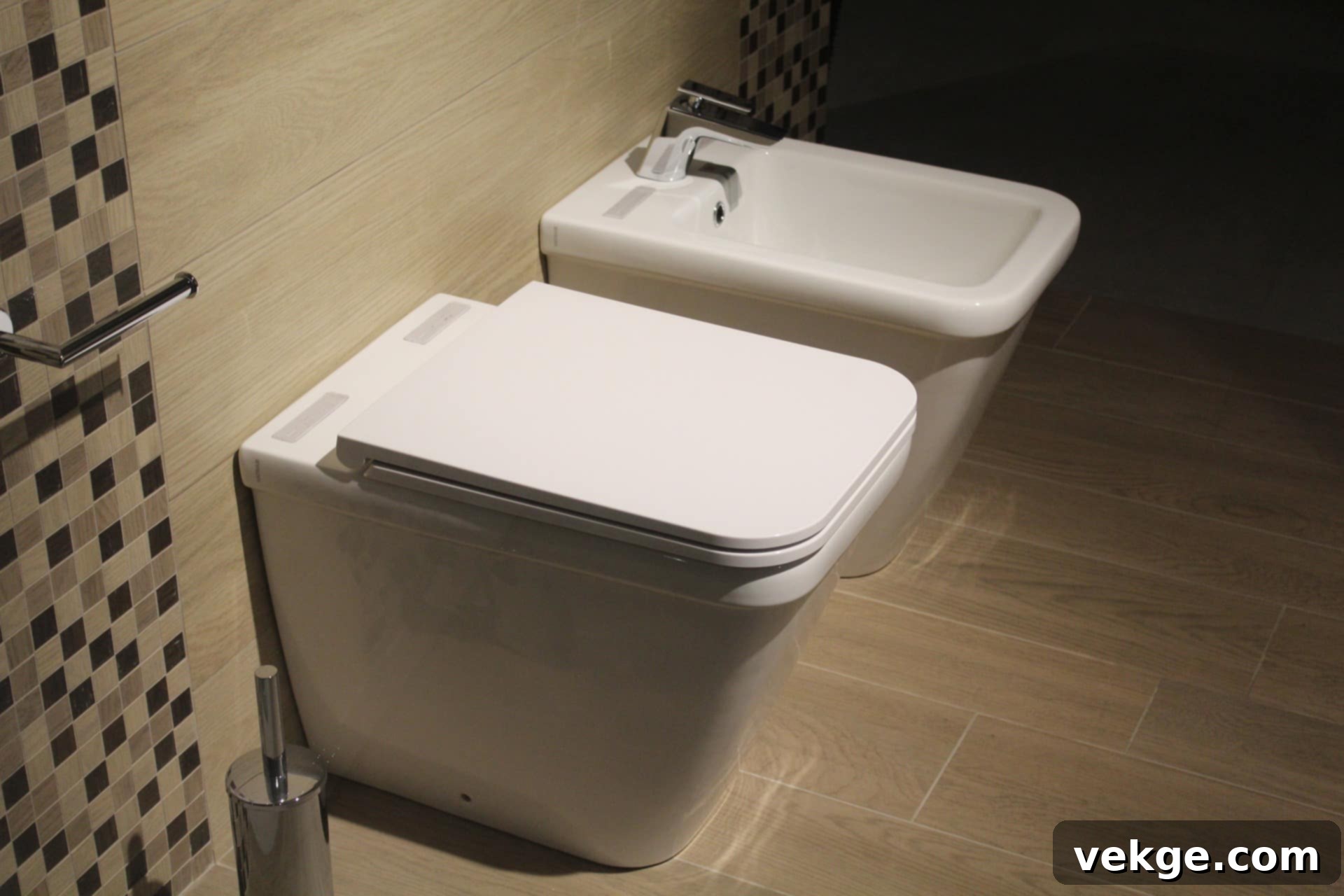The Ultimate Guide: Can You Flush Hair Down the Toilet? Risks, Clogs, and Prevention Tips
It’s a common dilemma: after a shower or brushing your hair, you’re left with a clump of strands. The toilet bowl, seemingly a convenient and quick disposal option, beckons. But while flushing human waste and toilet paper is perfectly fine, a critical question arises: can you flush hair down the toilet? The short answer is a resounding no. While it might seem like a harmless act, flushing hair down the toilet can lead to a cascade of plumbing issues, the most common and frustrating of which is a severe clog.
Understanding the immediate and long-term consequences of disposing of hair in your toilet is crucial for maintaining a healthy plumbing system. This guide will delve into why hair is such a menace to your pipes, what happens when it enters your drainage system, and most importantly, how to prevent costly clogs and effectively dispose of hair using alternative, safer methods.
What Happens to Hair Flushed Down the Toilet? The Anatomy of a Clog

Many people mistakenly believe that because hair is an organic material, it will simply biodegrade or dissolve over time, much like human waste or toilet paper. However, this is a significant misconception that can lead to costly plumbing problems. Human hair is remarkably resilient and does not break down easily, especially when it clumps together. Unlike toilet paper, which is specifically designed to disintegrate in water, hair retains its structure, creating a formidable obstruction in your pipes.
When hair is flushed, it rarely travels far. Its natural tendency is to clump and tangle, especially in the bends and rough spots within your plumbing system. The P-trap, the U-shaped pipe directly beneath your toilet, is a common initial collection point. Hair gets snagged on the sides of the pipe, accumulating with each subsequent flush. Over time, these individual strands weave together, forming dense, impenetrable mats that act like nets, catching soap scum, grease, dirt, and even small pieces of toilet paper that would otherwise pass through.
The Progression of a Hair Clog: From Minor Obstruction to Major Blockage
Initially, flushing a few strands of hair might not cause an immediate problem. The toilet might drain a little slower, but you might not notice a significant issue. However, this seemingly minor action contributes to a cumulative problem. Each time hair goes down, it adds to the existing tangle. Eventually, this accumulation reaches a critical mass, forming a blockage that severely restricts or completely stops water flow. This can result in a constantly overflowing toilet, slow drainage, or gurgling sounds, indicating that your plumbing is struggling.
Even if the hair manages to navigate the internal plumbing of your toilet and your immediate household pipes, it can still pose significant problems further down the sewage system. Municipal plumbing systems are meticulously designed to handle specific types of waste: human waste and toilet paper. Introducing other materials like hair places undue stress on these systems, potentially leading to blockages in main sewer lines. This means that by flushing hair down your toilet, you’re not only risking issues within your own property but could also contribute to wider problems for your neighborhood’s sewage infrastructure, potentially causing backups and requiring expensive public works interventions.
Short vs. Long Hair: Does It Make a Difference?
While long hair is undeniably more prone to tangling and creating large clogs, even short hair, like shaved stubble or trimmed beard hair, can contribute to blockages. A small quantity of short hair might pass through without immediate issues, but a large volume, or consistent flushing over time, can still accumulate. Short hairs can get caught on the rough edges within the drainage system, gradually building up and forming a restrictive layer, especially when combined with soap scum and other debris.
Recognizing and Addressing a Hair-Related Toilet Clog
Identifying a hair clog can sometimes be tricky, as symptoms can mimic other types of blockages. However, common signs include a toilet that flushes slowly, requires multiple flushes to clear, or has water levels that rise unusually high before slowly receding. Gurgling noises from the toilet or nearby drains after flushing are also strong indicators of a partial blockage. Addressing these issues promptly is key to preventing them from escalating into more severe and damaging problems.
DIY Fixes to Unclog Your Toilet (Use with Caution!)
If you suspect your toilet is clogged due to hair, there are a few DIY tricks you can try, depending on the severity of the blockage. However, it’s crucial to proceed with caution and understand the limitations of these methods.
- The Plunger: Your First Line of Defense
A high-quality plunger is often the most effective initial tool for minor clogs. Ensure you have a flange plunger (the one with an extended rubber flap) for toilets, as it creates a better seal. Place the plunger firmly over the drain opening, creating a vacuum. Plunge vigorously several times, maintaining the seal, and then pull it up sharply. Repeat this process until the water drains freely. While effective for dislodging many clogs, a plunger may not work for deeply embedded or very dense hair blockages. - Baking Soda and Vinegar: A Natural Approach
For a less aggressive, more environmentally friendly option, try a mixture of baking soda and vinegar. Pour one cup of baking soda into the toilet bowl, followed by two cups of white vinegar. The chemical reaction creates fizzing action that can help break down some clogs, particularly those involving soap scum and hair. Let it sit for at least 30 minutes, or even overnight for tougher clogs, before flushing with hot (not boiling) water. This method is generally safe for pipes but might not be powerful enough for severe hair clogs. - Chemical Drain Cleaners: A Risky Solution
Commercial chemical drain cleaners are readily available and promise quick fixes. However, these products come with significant risks. Many contain harsh chemicals like lye or sulfuric acid, which can corrode older pipes, especially PVC or metal pipes, leading to leaks or even burst pipes. They are also hazardous to handle, can emit toxic fumes, and are harmful to the environment. Furthermore, if the cleaner fails to clear the clog, it leaves a corrosive standing liquid that makes it dangerous for a plumber to work on. If you must use them, choose enzymatic or biological cleaners, which are less harsh and work by slowly digesting organic matter, though they are often ineffective against dense hair clogs. - Manual Drain Snake or Auger: For Deeper, Accessible Clogs
A manual drain snake (or hand auger) can be effective for reaching clogs beyond the P-trap. These tools consist of a long, flexible metal cable with a corkscrew tip. Insert the tip into the toilet drain opening and push it forward, rotating the handle to navigate bends. Once you feel resistance, it means you’ve hit the clog. Continue to rotate and push to break up or hook the hair, then slowly pull the snake back out. Be extremely careful not to scratch the porcelain of the toilet bowl, as this can be costly to repair.
When to Get Professional Help to Unclog the Toilet
While DIY solutions can be tempting, there are clear instances when professional intervention is not only recommended but essential. For severe or persistent toilet clogs, relying on expert plumbing services is the safest and most effective course of action. Professional plumbers possess the specialized expertise, advanced tools, and experience to diagnose and fix all types of clogs, ensuring no further damage to your plumbing system.
Signs You Need a Professional Plumber:
- Persistent Clogs: If your toilet repeatedly clogs despite your best DIY efforts, it indicates a deeper or more stubborn problem that requires professional attention.
- Multiple Fixture Clogs: If not just your toilet, but also your sink or shower drains are slow or clogged, it often points to a blockage in the main drain line, which is beyond the scope of most DIY fixes.
- Overflowing Toilet: An overflowing toilet is an emergency that needs immediate professional help to prevent water damage and unsanitary conditions.
- Foul Odors: Unpleasant sewage odors can indicate a serious blockage or even a sewer line issue.
- Gurgling in Other Drains: When flushing the toilet causes gurgling in a sink or shower drain, it’s a strong sign of a main line blockage.
How Professionals Tackle Hair Clogs
Plumbers utilize a range of tools and techniques far superior to household plungers or manual snakes. They might use powerful motorized augers that can cut through dense hair clogs and other debris. For particularly stubborn blockages or those deep within the system, hydro-jetting is often employed. This technique uses high-pressure water streams to blast away obstructions and thoroughly clean the inside of pipes, restoring them to their original capacity. In some extreme cases, plumbers might even need to remove the toilet fixture to gain direct access to the clog or use video inspection cameras to pinpoint the exact location and nature of the blockage. You can only know what type of service is truly needed after a professional inspection.
Preventing Future Hair Clogs: Best Practices for Hair Disposal
Prevention is always better than cure, especially when it comes to plumbing issues. Once you’ve experienced the inconvenience and potential cost of a clogged toilet, you’ll understand the importance of proper waste disposal. The simplest and most effective way to prevent future hair clogs is to never flush anything other than human waste and toilet paper.
- The Trash Can is Your Best Friend: This is the golden rule. All hair, whether from brushing, shaving, or cleaning a hairbrush, should be collected and placed directly into the trash can. Keep a small waste bin in your bathroom specifically for this purpose.
- Use Hair Catchers/Screens: While this article primarily focuses on toilets, hair also clogs shower and sink drains. Install mesh hair catchers or drain screens in all your shower and bathtub drains to trap hair before it enters the plumbing. Regularly clean these traps, discarding the collected hair in the trash.
- Wipe Up Loose Hair: After grooming, wipe down sinks and countertops to gather loose hair. Instead of rinsing it down the drain, ball it up and toss it into the waste bin.
- Regularly Clean Hairbrushes: Remove accumulated hair from your hairbrushes frequently, and dispose of it in the trash. This prevents large clumps from ending up near a drain.
Conclusion: Protect Your Plumbing, Dispose of Hair Responsibly
The temptation to flush hair down the toilet might be strong due to its perceived convenience, but the risks far outweigh any momentary ease. Human hair does not biodegrade quickly, and its fibrous nature makes it an ideal candidate for creating stubborn, costly clogs in your plumbing system. From minor household annoyances to significant damage and expensive professional repairs, the consequences of improper hair disposal can be severe.
By understanding what happens when hair enters your drains and adopting simple preventive measures, you can safeguard your plumbing and avoid the stress of a clogged toilet. Remember, your toilet is designed for specific types of waste. For all other items, especially hair, the trash can is the only responsible and plumbing-friendly solution. Make proper hair disposal a habit, and your pipes (and your wallet) will thank you.
